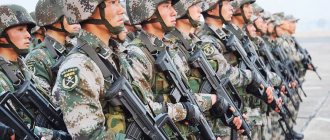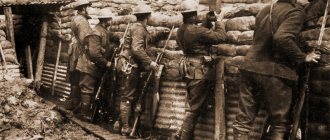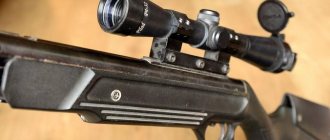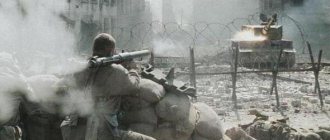Inventing a new type of effective means of self-defense is quite difficult. It would seem that something new could be invented in the field of shock-crushing weapons. However, in the second half of the last century, a number of new types of self-defense means of shock-crushing action were invented.
The most significant of them, in my opinion, is the invention in the 1970s. keychain - kubotana . This remedy was invented by Japanese martial arts master Takayuki Kubota during his time as a police hand-to-hand combat instructor. Like other instructors, he taught police officers how to use improvised means for self-defense, including pens and a set of keys. The combination of these two items gave birth to a new type of self-defense.
T. Kubota and classic kubotans (top - Persuader)
The classic kubotan is a rod made of high-strength plastic with grooves or protrusions to make it easier to hold in the hand.
The first production of a new means of self-defense was organized (currently by the group). Until now, the design of her kubotan “ Persuader ” (literally “Negotiator”) is considered a reference.
Subsequently, varieties of kubotan appeared on the market, made of wood or metal, including those with a pointed end (its creator had a sharply negative attitude towards this form of kubotan, considering it dangerous).
Even more dangerous is the kubotan - a knife.
In this kubotan, the rod is made hollow. Inside the cavity is a small blade that can be screwed into the striking end of the kubotan.
On the market you can also find models with replaceable impact ends. In this case, the owner himself can change the shape of the kubotan depending on his preferences.
The most interesting modification of the kubotan is a means of personal self-defense, which is marketed under the name “ Te Bo ” (translated from Japanese as “palm stick”). This modification of the kubotan was developed by the Italian Stefan Joseph Gamma , an expert in Japanese martial arts and a hand-to-hand combat instructor for the police.
It is distinguished from the classic kubotan by the striking part in the form of a rib, running along the entire length of the rod. In addition, for a secure grip, there are two finger grooves on the side opposite the striking edge.
To apply pain to the enemy, a striking rib is used; if it is necessary to increase the pain sensation, the end of the device is formed by the intersection of the rib and the flat end.
Kubotans with a thickened striking end are quite rare. Based on such kubotans, the Englishwoman Debi Stephen created a multifunctional personal security device for the Self-Defense Federation of England. This device was called " Weeble ". The need to develop such a device was caused by the increase in crimes against women and teenagers in England using drugs mixed into drinks.
The device is made in the form of a hollow cylindrical container made of aluminum. Its shape follows the shape of a kubotan with a thicker end, and it can be used for self-defense.
The internal cavity contains a reminder with emergency telephone numbers, rescue services, and legal taxi call services. This cavity can be used as a temporary storage container for liquid samples for later analysis in a forensic laboratory.
A reminder card is attached to the outer key ring with recommendations on how to avoid the risk of poisoning, a description of the symptoms of poisoning and what to do if poisoning does occur.
The attitude of the authorities towards the use and wearing of yawara
At first glance, this stick does not seem to be dangerous.
But its use can lead to death. Remember that when using Yavara in self-defense, you cannot hit the enemy’s vulnerable spots with its sharp ends. These include the following areas of the body:
- neck;
- groin;
- eyes;
- whiskey;
- stomach.
According to the law, the yavara is a brass knuckles, i.e. weapons. The production of power brass knuckles and their circulation on the territory of the Russian Federation is prohibited (according to Part 4 of Article 223 of the Criminal Code of the Russian Federation and the Federal Law “On Weapons”). But when such a weapon is discovered or used, a forensic examination is carried out, which determines whether the object is a katet-type bladed weapon or not.
Many craftsmen create brass knuckle-like objects that are difficult to confidently classify as bladed weapons. And there are a lot of similar objects around a person that can be used in the same way. The yawara brass knuckles in one form or another have become widespread all over the world.
Its qualities and ease of creation made the weapon popular both among specialists and the general population. It has already received transformations - a kubotan has been created on the basis of Yawara, which is widespread among law enforcement officers.
Various types of kubotans
The Japanese master, having created the kubotan, did not take out a patent for his invention. After the kubotan gained popularity, many companies began to produce similar items for self-defense.
Many did not like the idea of a plastic kubotan, and the market was filled with metal products with a pointed end. There is even a specific kubotan knife, the blade of which is hidden in a hollow tube and is removed when twisted. The kubotan knife is an interesting development, but there is little point in it, since it will take too much time to bring it into a fighting position with the blade facing outward. Moreover, such a kubotan knife contradicts the very concept of this weapon, self-defense without causing serious injuries, because if you manage to bring the kubotan knife into its combat position, then serious, possibly even fatal injuries will be inflicted on your opponent.
Strikes and techniques using the kubotan
All techniques for mastering this subject can be divided into four sections:
Strikes with the ends, top or bottom. The simplest technique and easiest to learn. Kubotan can be held with a knife grip, either straight or reverse. Instinctively, a person tries to hit with an object clenched in his fist. In addition, this technique is easy to transfer later to knife fighting; Strikes with a weighting agent, which is usually played by keys. Not a particularly effective technique, since the keys are quite light and fan out in different directions when hit. To be effective, you need to put a special case with a tightening rope on the keys, then the impact force will increase several times; Painful techniques, which include impact on the points and twisting of the fingers. They require quite serious preparation. Again, with this level of training, a kubotan will not be needed; Special techniques using kubotan combinations with keys held between the fingers. Quite traumatic techniques for the owner of a kubotan; you can easily twist your fingers.
Making a kubotan with your own hands
Kubotan is easy to make from wood or plastic. The simplest option is to cut it out of wood, the most difficult is to turn it out of metal on a lathe.
To make a wooden kubotan you need:
Find a drawing of a kubotan that suits you on the Internet; Buy a wooden handle for a hammer at any hardware store; Saw off a piece of it that suits the length; Cut out the kubotan of the parameters we need from the blank.
If desired, the newly made kubotan can be decorated with decorative carvings, covered with stain and soaked in drying oil or special oil. Don't forget to drill a hole in one end for the ring.
Kubotan is easy to make yourself or purchase in specialized stores. An ebonite massage stick of suitable size can be an excellent kubotan. The main thing is not to forget about training and practicing strikes using the kubotan. Without knowledge of technology, not only the kubotan, but even the Japanese katana will not help you. If you have to use a kubotan to protect your life and health or to protect your family, feel free to engage in battle. Remember that if you are determined to win, this is already half the success in battle.
History of appearance
Soke Kubota Takayuki is a Grand Master of Martial Arts and a 10th Dan holder. He also founded the International Karate Association, where he serves as president and created directions in martial arts and karate Gosoku Ryu, Kubojitsu, Kubotan. The master developed a kubotan, the prototype of which was the yawara - this is a Japanese brass knuckles for delivering jabbing blows.
The Kubotan was intended as a weapon for police officers, so as not to cause serious injury to them when apprehending offenders.
As Soke Kubota himself, who was then working as a martial arts instructor in one of the police departments, said, the idea to create a kubotan was prompted by some moments in the work of police officers:
- The use of batons often causes outrage among the population. The public believes that police officers must be careful in the use of physical force.
- Women who choose to become police officers must work equally with men.
Then Soke Kubota demonstrated the use of the kubotan. The product is small in size, convenient and suitable for any officer, regardless of his physical characteristics.
The first introduction of the product took place at the Los Angeles Police Department in the seventies, and later it was used to train police officers in the art of combat. Basically, it was presented as an effective tool for influencing the offender, and for this the police had to use maximum force.
The history of Javara and its distribution in the world
Several versions of the origin of Javara are popular:
According to the first version, yavara is very similar to one of the symbols in Buddhism - “varju”, “faith”. Both items have a similar shape. The servants who wore this symbol could not have weapons, and the warja was not considered such. There is a chance that one of the monks identified a “non-standard way of using” this religious attribute.
Another version is much simpler and more plausible: yavara is an ordinary pestle, previously used for grinding various substances in a mortar. It could also be used for other purposes.
Ancient world:
Yawara has become widespread not only in Japan, but also in other parts of Asia:
- China;
- Thailand;
- Vietnam (where it was called “tuy”).
In ancient times, javaru was created mainly from wood of various types. Thus, a legend even arose that a warrior chose for production the tree whose spirit patronized him. This helped him survive in battle.
Ordinary people could only afford wood. That is why yavara was distributed mainly among the poor: peasants and artisans. Plus, it was precisely these segments of the population that did not have the right to carry combat bladed weapons.
There is evidence that the ease of use, noiselessness and reliability of this weapon was appreciated and adopted by ninjas. This is logical: in the hands of a professional, the yavara becomes a formidable and effective weapon.
Distribution in Europe
Yavara came to the Old World en masse already in the 17th century. This was greatly facilitated by the context of that time: continuously weaving intrigues, the era of secret societies, conspiracies. Any secret weapon that looked like a safe object was used - rings with hidden spikes, twisting blades, hidden stilettos, etc.
But the popularity soon faded. Only “at home”, in the Far East, did Yavara retain its position.
In the Russian Empire
Yes, we had something similar. They called it differently in Rus':
- siskin (by analogy with the projectile from the famous game);
- pig (cast iron stick);
- scratch;
- palm (lead stick);
- bookmark, etc.
In the 20th century
At first it seemed that the yavara was purely a weapon of self-defense. Later, over the years of use, they came to the conclusion that in the hands of a craftsman it is not inferior to either a club or a knife:
It, unlike a knife and a club, is less noticeable, but is better suited for self-defense, when you need to incapacitate the enemy without causing him serious damage. At the same time, the yavara is always an auxiliary weapon. Unlike a knife and a club, you cannot build a fight around it. In traditional Asian martial arts, with a stick in hand, grips and kicks have always been used.
It was recommended to be used in cases where it is inappropriate to use firearms. It was used not only by patrol officers, but also by undercover officers.
Advantages and disadvantages
Kubotan has a number of advantages and disadvantages that should be taken into account when choosing this type of weapon for self-defense.
Flaws:
- The need for preparation. Like any weapon, the Kubotan requires the ability to wield it. Of course, if you just hit a person with a cubatan in his hand, it will hurt him much more than if you just hit him with your hand. However, in order to increase the effectiveness of use, it is better for you to become familiar with the fighting technique.
- External uselessness. The kubotan's small size and general harmlessness cause many people to upgrade the kubotan, turning it into an illegal weapon.
- The need for close combat. When using the Kubotan, you will have to be fairly close to the enemy. In some cases this can be very dangerous.
Advantages:
- Legality. By virtue of its design and concept, the Kubotan goes beyond the boundaries of prohibited weapons. It is very unlikely that you will ever get into serious trouble with the law because of it.
- Carrying with you. How often do you leave your house without taking your keys with you? The keychain weapon will always be with you. In addition, keys can also be used in self-defense as a strengthening factor.
- External uselessness. Yes, yes, in the case of Kubotan this is both a minus and a plus. Attackers, as a rule, simply do not take a harmless keychain seriously. But in vain.
- Simplicity of design. Accordingly, prices in specialized stores are not too high. And also the opportunity to make it yourself.
Video instruction manual:
Item Description
Kubotan was created by Soke Kubota Takayuki in 1976. It is a rethought and modernized version of the yawara - an ancient impact-crushing weapon (brass knuckles), which was widespread in Indochina and Japan.
In its classic form, it is a rod (stick) of hard plastic 14 cm (5.5 inches) long, 1.5 cm (0.56 inches) in diameter and weighs 56.7 grams (2 ounces). This rod has no protrusions or notches at the ends, but has six transverse grooves along its entire length for ease of grip. Its upper end is drilled and a ring is passed into this hole for hanging a weight - any massive object, including a bunch of keys.
Since keys have become the main type of equipment for the kubotan, it is often called a keychain weapon.
What is Kubotan? Watch the following video and find out:
Advantages and disadvantages
The dimensions and weight of the classic kubotan are given for good reason. It is in this form that it is considered a non-lethal weapon of self-defense. Its advantage and at the same time disadvantage is precisely its dissimilarity to something that can cause damage to the attacker and help emerge victorious from the fight.
Kubotan is applied to special sensitive points on the human body. You must not only know their location, but also be able to achieve it. And, no less important, believe that an ordinary plastic stick will lead to victory. This is a defensive device that becomes effective only in the hands of a person who is physically and psychologically prepared.
The simplicity of the kubotan's design also hides another danger: it is very tempting to make a keychain from an iron rod with spikes or even a knife at one end, and instead of keys, hang a weight of about a hundred grams. In this form, it is no longer a kubotan, but a yawara - a kind of brass knuckles from Southeast Asia, a shock-crushing weapon, which is prohibited by Russian law.
Next, we will talk about the purpose of such a keychain and provide instructions on the technique of fighting and striking with a kubotan.
Kubotan (photo)
The purpose of the kubotan
Kubotan is almost weightless, so it cannot be considered as a weight and amplifier. But what he can really do is take on the response of the body that is struck.
Let's say, when defending, you hit the attacker's head with your fist or open hand. Will it hurt you? Without a doubt. And pain is always a short-term shock that the enemy can take advantage of.
Hitting with the free end of the kubotan will save you from such an unpleasant incident. In the event of a lashing blow with a bunch of keys, the kubotan will play the role of an extension lever, increasing its effectiveness.
Product types
Soke Kubota Takayuki, when creating this weapon (more like a device) for self-defense, did not patent his brainchild, so subsequently many of its modifications appeared, blindly copying only the form factor - a rod with a ring at the end for hanging a weighting agent.
- The closest to the original and still considered the standard is the Persuader model (literal translation from English - negotiator), produced by Monandnock, a division of the Safarilan Group corporation, which produces accessories and equipment for the armed forces, police and professional security guards.
- There are many models on the market made of metal , with a pointed end or replaceable tips in the form of spikes and even a knife. Kubota Takayuki himself opposes such innovations, considering such products to be dangerous and traumatic, completely discrediting his idea.
- Very close to the original idea can be considered the kubotan model proposed by the Italian Joseph Gamma and produced under the name “Te Vo” (palm stick). It differs from the original in that its cross-section is not round, but drop-shaped. A sharp edge allows you to more effectively carry out painful techniques and makes direct strikes more effective.
- There are kubotans that have a thickened lower end , but they are very rare. Their shape was used to create a multi-functional personal safety device approved by the UK Self Defense Federation. This is a hollow cylindrical container made of aluminum. Inside it are printed notices with telephone numbers of emergency services and legal taxi companies. The reason for its creation was a series of attacks on women and teenagers by mixing psychotropic and toxic substances into their drinks. If desired, liquid samples can be stored in such a “kubotan” for examination. Attached to the key ring is a signature on which advice is written for those who feel ill and consider themselves poisoned.
We will tell you how to use the kubotan below.
The video below will take you through the intricacies of using the kubotan:
Structure and technique of fighting with Javara
Yavara is distinguished, first of all, by its simplicity and impeccable reliability. Essentially, it is a simple short stick with pointed ends. It is clamped in the hand, and the blow itself is delivered:
- Mainly with the sharp part (most often, with a backhand movement, bottom-up or top-down) with poking movements.
- With a fist (with a piece of wood clamped, the blow becomes much stronger).
It is best to use two compressed sticks at once in battle. The fighter usually moves actively and makes short, sharp lunges. The blows are delivered at different levels to different parts of the body. He himself also moves, alternating kicks and punches.
Some models have a loop that is threaded through the hand to secure the weapon. Others have thorns. But the essence remains the same - punching and poking. Boxers are best at punching with a clenched stick. And javara pokes are from masters of Chinese and Filipino martial arts. The skills of simple hand-to-hand combat and karate will also come in handy.
This weapon has the following advantages:
- It's easy to make.
- The Yawara is a reliable weapon, versatile and easy to use.
- The javara has good striking power.
- The wand is effective in close combat and in tight spaces.
There are also disadvantages: the yawara is practically useless in the hands of an inept fighter. It increases the force of the blow, but nothing more. It takes long hours of training to learn how to successfully use it in battle and hit with its sharp ends.
Design
In the original, Kubotan – Kubotankeychain – is a formalized trade brand of Grand Master Soke Kubota. It can be compared to a stick or rod; the material used for manufacturing is plastic:
- length is 14 cm;
- diameter – 1.5 cm;
- weight – 56.6 g.
There are no sharp parts or edges on it. The body of the rod has six grooves designed for better grip, and a key ring is attached to one end. According to the classification, this product does not fall under the definition of a weapon.
There are also many other shapes and design options for the product. For the manufacture of rods, an aluminum alloy is used, the body of which may contain sharp, cone-shaped spikes and blades. They are sold under the Kubotan brand, but in fact they have nothing to do with the original.
Pros and cons of using a kubotan in combat
Kubotan is not a weapon, and it looks peaceful, so it does not cause any fear to the attacker who attacks you. This is the main advantage when using kubotan. Despite its modest size, it is capable of inflicting quite painful injuries on the person attacking you.
You should not think that having a kubotan in your hands will easily defeat your opponent. Any weapon requires, first of all, the ability to wield it. Kubotan in the traditional technique is used to influence human pain points. There is no need to explain that first you need to learn these points, and then learn how to hit them in battle, which is very difficult. This is the paradox of the kubotan fighting technique - having learned to hit the pressure points in battle, you will no longer need the kubotan.
Many people, believing that the kubotan itself is not effective in combat, modernize it by hanging a heavy weight on a key ring. The technique of working with such an object will have nothing in common with working with a classic kubotan. Moreover, such a design will be equated to a flail, and any representative of the law can confiscate it, and you will answer before the law for the manufacture of edged weapons with crushing action.
Applications of Kubotan
The kubotan technique is based on the “pain compliance” theory used by the police. According to this theory, to gain control over a suspect, it is not at all necessary to injure him, but rather to act on pressure points. If you choose such a point correctly, then the impact force ceases to play a decisive role. There are pain points on the arms and legs, they are located along the spine or near the solar plexus.
Special recommendations have been developed for police officers.
- First, they must be especially careful when applying kubotan to the throat, eye, and groin points.
- Secondly, they must understand that the reaction to pain of a person under the influence of drugs has some characteristics.
The compactness of the key fob allows the police officer to conduct a conversation with the suspect without provoking him to aggressive actions.
For civilians, the technique of striking with a kubotan is somewhat different. It is necessary to understand that the policeman must calmly control all his movements, while the civilian will try to run away from the attacker. In this regard, it is recommended to use a bunch of keys on a keychain as a cutting weapon. Thus, the kubotan is used in Jab with Keys or Jab with Shaft mode.
When using a kubotan, it is important to understand that the main bet is not on the physical strength of the fighter, but on hitting one of the enemy’s painful points with the rod. In this regard, there are several standard techniques
- The blows are applied by the end of the rod with the keys or the opposite end in the direction from bottom to top and from top to bottom. In this case, the thumb should lie along the rod on its surface, and the remaining fingers should firmly hold the weapon in the hand.
- The grip remains the same, but the punches turn from jabbing to whipping, and it is necessary to hit with the side of the kubotan on which the keys hang. They can be located both above the hand and below it.
- With the help of the kubotan you can perform painful techniques. To do this, you need to take the rod with four fingers so that the keys point towards your wrist. With your thumbs you can press the keys against the rod, resulting in the formation of so-called pliers. Usually the enemy's fingers get caught in the pincers. If you add twisting movements to the clamp, you can cause pain to your opponent without much effort.
- Special techniques. There may be several of them. The most common technique is considered to be one that allows for a piercing or furrowing blow. To do this, you need to hold the keys in your fist and take the rod so that it is sandwiched between the phalanges of the middle and index fingers. The reverse option is also allowed: the kubotan is held in the hand, and one of the keys is located between the indicated phalanges.
Special techniques are described in detail in manuals on using the kubotan. Various martial arts masters give practical recommendations on how to effectively use the rod in certain conditions.
Don't overestimate your strength. Having a kubotan in your hands does not guarantee complete victory over the enemy.
Absolutely any weapon requires a certain skill in handling it. To successfully handle a key fob, you need to have a good knowledge of the anatomy of the human body in order to immediately determine the points suitable for impact.










